M A Laughton,D F Warne0750646373, 9780750646376
Table of contents :
Contents……Page 5
Preface……Page 9
Section A……Page 11
1 Units, Mathematics and Physical Quantites……Page 13
1.1 International unit system……Page 15
1.2 Mathematics……Page 16
1.3 Physical quantities……Page 29
1.5 Electricity……Page 38
2 Electrotechnology……Page 45
2.1 Nomenclature……Page 47
2.2 Thermal effects……Page 50
2.3 Electrochemical effects……Page 54
2.4 Magnetic field effects……Page 56
2.5 Electric field effects……Page 63
2.6 electromagnetic field effects……Page 67
2.7 Electrical discharges……Page 69
3 Network Analysis……Page 75
3.2 Basic network analysis……Page 77
3.3 Power-system network analysis……Page 102
Section B Materials & Processes……Page 119
4 Fundamental Properties of Materials……Page 121
4.4 Electrically conducting materials……Page 123
4.5 Magnetic materials……Page 124
4.6 Dielectric materials……Page 126
4.7 Optical materials……Page 127
4.8 The plasmac state……Page 128
5 Conductors and Superconductors……Page 129
5.1 Conducting materials……Page 131
5.2 Superconductors……Page 137
6 Semiconductor, Thick and Thin-Film Microcircuits……Page 143
6.1 Silicon, silicon dioxide, thick- and thin-film technology……Page 145
6.2 Thick- and thin-film microcircuits……Page 147
7 Insulation……Page 153
7.1 Insulating materials……Page 155
7.2 Properties and testing……Page 156
7.3 Gaseous dielectrics……Page 160
7.4 Liquid dielectrics……Page 163
7.5 Semi-fluid and fusible materials……Page 165
7.6 Varnishes, enamels, paints and lacquers……Page 171
7.7 Solid dielectrics……Page 172
7.9 Irradiation effects……Page 182
7.10 Fundamentals of dielectric theory……Page 184
7.11 Polymeric insulation for high voltage outdoor applications……Page 187
8 Magnetic Materials……Page 189
8.2 Electrical steels including silicon steels……Page 191
8.3 Soft irons and relay steels……Page 193
8.4 Ferrites……Page 195
8.5 Nickel-iron alloys……Page 199
8.7 Permanent magnet materials……Page 201
9 Electroheat and Materials Processing……Page 207
9.2 Direct resistance heating……Page 209
9.3 Indirect resistance heating……Page 211
9.4 Electric ovens and furnaces……Page 215
9.5 Induction heating……Page 216
9.6 Metal melting……Page 221
9.7 Dielectric heating……Page 226
9.9 Plasma torches……Page 230
9.10 Semiconductor plasma processing……Page 232
9.11 Lasers……Page 236
10 Welding and Soldering……Page 245
10.1 Arc welding……Page 247
10.2 Resistance welding……Page 273
10.3 Fuses……Page 280
10.4 Contacts……Page 282
10.5 Special alloys……Page 286
10.6 Solders……Page 288
10.8 Temperature-sensitive bimetals……Page 289
10.9 Nuclear-reactor materials……Page 290
10.10 Amorphous materials……Page 293
Section C Control……Page 297
11 Electrical Measurement……Page 299
11.4 National and international measurement standards……Page 301
11.5 Direct-acting analyogue measuring instrucments……Page 302
11.6 Integrating (energy) metering……Page 307
11.7 Electronic instrumentation……Page 308
11.8 Oscilloscopes……Page 315
11.9 Potentiometers and bridges……Page 321
11.10 Measuring and protection transformers……Page 330
11.11 Magnetic measurements……Page 332
11.12 Transducers……Page 334
11.13 Data recording……Page 340
12 Industrial Instrumentation……Page 343
12.1 Introduction……Page 345
12.2 Temperature……Page 348
12.3 Flow……Page 351
12.4 Pressure……Page 358
12.5 Level transducers……Page 362
12.6 Position transducers……Page 366
12.7 Velocity and acceleration……Page 371
12.8 Strain gauges, loadcells and weighing……Page 373
12.9 Fieldbus systems……Page 377
12.10 Installation notes……Page 381
13 Control Systems……Page 383
13.2 Laplace transforms and the transfer function……Page 385
13.4 Feedback……Page 388
13.5 Generally desirable and acceptable behaviour……Page 389
13.6 Stability……Page 390
13.7 Classification of system and static accuracy……Page 391
13.8 Transient behaviour……Page 392
13.9 Root-locus method……Page 395
13.10 Frequency-response methods……Page 397
13.11 State-space description……Page 402
13.12 Sampled-data systems……Page 406
13.14 Sampler and zero-order hold……Page 407
13.15 Block diagrams……Page 408
13.16 Closed-loop systems……Page 409
13.18 Example……Page 410
13.20 Simulation……Page 412
13.21 Multivariable control……Page 415
13.22 Dealing with non-linear elements……Page 417
13.23 Distrubances……Page 424
13.24 Ratio control……Page 427
13.25 Transit delays……Page 429
13.26 Stability……Page 430
13.27 Industrial controllers……Page 434
13.28 Digital control algorithms……Page 439
13.29 Auto-tuners……Page 441
13.30 Practical tuning methods……Page 442
14 Digital Control Systems……Page 447
14.1 Introduction……Page 449
14.2 Logic families……Page 451
14.3 Combinational logic……Page 457
14.4 Storage……Page 465
14.5 Timers and monostables……Page 469
14.6 Arithmetic circuits……Page 470
14.7 Counters and shift registers……Page 473
14.8 Sequencing and event driven logic……Page 476
14.9 Analog interfacing……Page 479
14.10 Practical considerations……Page 480
14.11 Data sheet notations……Page 482
15 Microprocessors……Page 483
15.2 Structured design of programmable logic systems……Page 485
15.3 Microprogrammable systems……Page 488
15.4 Programmable systems……Page 490
15.5 Processor instruction sets……Page 496
15.6 Program structures……Page 499
15.7 Reduced instruction set computers (RISC)……Page 501
15.8 Software design……Page 503
15.9 Embedded systems……Page 505
16 Programmable Controllers……Page 509
16.1 Introduction……Page 511
16.2 The programmable controller……Page 514
16.3 Programming methods……Page 521
16.4 Numerics……Page 537
16.5 Distributed systems and fieldbus……Page 549
16.6 Graphics……Page 553
16.8 Safety……Page 556
Section D Power Electronics and Drives……Page 561
17 Power Semiconductor Devices……Page 563
17.1 Junction diodes……Page 566
17.2 Bipolar power transistors and Darlingtons……Page 569
17.3 Thyristors……Page 576
17.4 Schottky barrier diodes……Page 587
17.5 MOSFET……Page 589
17.6 The insualted gate bipolar transistor (IGBT)……Page 594
18 Electronic Power Conversion……Page 601
18.1 Electronic power conversion principles……Page 603
18.2 Switch-mode power supplies……Page 605
18.3 Dc-Ac conversion……Page 620
18.4 Ac-Dc conversion……Page 626
18.5 Ac/ac conversion……Page 634
18.6 Resonant techniques……Page 637
18.7 Modular systems……Page 639
18.8 Further reading……Page 643
19 Electrical Machine Drives……Page 645
19.2 Fundamental control requirements for electrical machines……Page 647
19.3 Drive power circuits……Page 653
19.4 Drive control……Page 666
19.5 Applications and drive selection……Page 672
19.6 electromagnetic compatibility……Page 677
20 Motor and Actuators……Page 679
20.2 Electromagnetic devices……Page 681
20.3 Industrial rotary and linear motors……Page 693
Section E Environment……Page 723
21 Lighting……Page 725
21.2 Quantities and units……Page 727
21.3 Photometric concepts……Page 728
21.4 Lighting design terminology……Page 730
21.5 Lamps……Page 732
21.6 Lighting design……Page 744
21.7 Design techniques……Page 751
21.8 Lighting applications……Page 753
22 Environmental Control……Page 757
22.2 Environmental comfort……Page 759
22.3 Energy requirements……Page 767
22.4 Heating and warm-air systems……Page 770
22.5 Control……Page 774
22.6 Energy conservation……Page 778
22.7 Interfaces and associated data……Page 780
23 Electromagnetic Compatibility……Page 785
23.3 The EMC model……Page 787
23.4 EMC requirements……Page 789
23.7 Printed circuit boards……Page 790
23.9 Power supplies and power-line filters……Page 791
23.11 Enclosure design……Page 792
23.12 Interface cable connections……Page 793
23.14 System design……Page 795
23.16 Conformity assessment……Page 797
23.17 EMC testing and measurements……Page 798
23.18 Management plans……Page 799
24 Health and Safety……Page 801
24.1 The scope of electrical safety considerations……Page 803
24.2 The nature of electrical injuries……Page 806
24.3 Failure of electrical equipment……Page 809
25 Hazardous Area Technology……Page 813
25.1 A brief UK history……Page 815
25.2 General certification requirements……Page 816
25.4 Explosion protection concepts……Page 817
25.5 ATEX certification……Page 822
25.6 Global view……Page 823
25.7 Useful websites……Page 824
Section F Power Generation……Page 825
26 Prime Movers……Page 827
26.1 Steam generating plant……Page 829
26.2 Steam turbine plant……Page 832
26.3 Gas turbine plant……Page 842
26.4 Hydroelectric plant……Page 846
26.5 Diesel-engine plant……Page 855
27 Alternative Energy Sources……Page 869
27.1 Introduction……Page 871
27.2 Solar……Page 872
27.3 Marine energy……Page 874
27.4 Hydro……Page 877
27.5 Wind……Page 878
27.6 Geothermal energy……Page 880
27.7 Biofuels……Page 881
27.8 Direct conversion……Page 884
27.9 Fuel cells……Page 885
27.10 Heat pumps……Page 889
28 Alternating Current Generators……Page 901
28.1 Introduction……Page 903
28.2 Airgap flux and open-circuit……Page 904
28.3 Alternating current windings……Page 909
28.4 Coils and insulation……Page 911
28.5 Temperature rise……Page 916
28.6 Output equation……Page 917
28.7 Armature reaction……Page 920
28.8 Reactances and time constants……Page 922
28.9 Steady-state operation……Page 925
28.10 Synchronising……Page 927
28.11 Operating charts……Page 929
28.12 On-load excitation……Page 931
28.13 Sudden three-phase short circuit……Page 932
28.14 Excitation systems……Page 934
28.15 Turbogenerators……Page 941
28.17 Hydrogenerators……Page 946
28.18 Salient-pole generators other than hydrogenerators……Page 950
28.19 Synchronous compensators……Page 952
28.21 Standards……Page 953
29 Batteries……Page 961
29.2 Cells and batteries……Page 963
29.3 Primary cells……Page 964
29.4 Secondary cells and batteries……Page 967
29.5 Battery applications……Page 973
29.6 Anodising……Page 974
29.7 Electrodeposition……Page 976
29.8 Hydrogen and oxygen electrolysis……Page 977
Section G Transmission and Distribution……Page 981
30 Overhead lines……Page 983
30.2 Conductors and earth wires……Page 985
30.3 Conductor fittings……Page 989
30.4 Electrical characteristics……Page 990
30.5 Insulators……Page 992
30.6 Supports……Page 995
30.8 Loadings……Page 998
31 Cables……Page 1003
31.1 Introduction……Page 1005
31.2 Cable components……Page 1008
31.3 General wiring cables and flexible cords……Page 1013
31.4 Supply distribution cables……Page 1017
31.5 Transmission cables……Page 1025
31.6 Current-carrying capacity……Page 1032
31.7 Jointing and accessories……Page 1035
31.8 Cables fault location……Page 1037
32 HVDC……Page 1047
32.1 Introduction……Page 1049
32.2 Applications of HVDC……Page 1050
32.3 Principles of HVDC converters……Page 1051
32.4 Transmission arrangements……Page 1055
32.5 Converter station design……Page 1057
32.6 Insulation co-ordination of HVVDC converter stations……Page 1062
32.7 HVDC thyristor valves……Page 1065
32.8 Design of harmonic filters for HVDC converters……Page 1070
32.9 Reactive power considerations……Page 1075
32.10 Control of HVDC……Page 1076
32.11 Ac system damping controls……Page 1080
32.12 Interaction between ac and dc systems……Page 1081
32.13 Multiterminal HVDC systems……Page 1088
32.14 Future trends……Page 1090
33 Power Transformers……Page 1093
33.2 Magnetic circuits……Page 1095
33.3 Windigns and insulation……Page 1099
33.4 Connections……Page 1105
33.7 On-load tap changing……Page 1108
33.8 Cooling……Page 1110
33.9 Fittings……Page 1112
33.11 Auto-transformers……Page 1113
33.12 Special types……Page 1114
33.13 Testing……Page 1115
33.14 Maintenance……Page 1119
33.15 Surge protection……Page 1121
33.16 Purchasing specfications……Page 1122
34 Switchgear……Page 1123
34.1 Circuit-switching devices……Page 1125
34.2 Materials……Page 1141
34.3 Primary-circuit-protection devices……Page 1143
34.4 LV switchgear……Page 1147
34.5 HV secondary distribution switchgear……Page 1149
34.7 HV transmission switchgear……Page 1151
34.8 Generator switchgear……Page 1152
34.9 Switching conditions……Page 1153
34.10 Switchgear testing……Page 1156
34.13 Future developments……Page 1157
35 Protection……Page 1159
35.1 Overcurrent and earth leakage protection……Page 1161
35.2 Application of protective systems……Page 1178
35.3 Testing and commissioning……Page 1183
35.4 Overvoltage protection……Page 1185
36 Electromagnetic Transients……Page 1189
36.2 Basic concepts of transient analysis……Page 1191
36.3 Protection of system and equipment against transient overvoltage……Page 1195
36.4 Power system simulators……Page 1196
36.5 Waveforms associated with the electromagnetic transient phenomena……Page 1198
37 Optical Fibres in Power Systems……Page 1205
37.2 Optical fibre fundamentals……Page 1207
37.3 Optical fibre cables……Page 1212
37.4 British and International Standards……Page 1216
37.5 Optical fibre telemetry on overhead power lines……Page 1217
37.6 Power equipment monitoring with optical fibre sensors……Page 1219
38 Installation……Page 1223
38.2 Regulations and specfications……Page 1225
38.3 High-voltage supplies……Page 1226
38.5 Substations……Page 1227
38.6 Wiring systems……Page 1231
38.7 LIghting and small power……Page 1233
38.8 Floor trunking……Page 1234
38.11 Low-voltage switchgear and protection……Page 1235
38.12 Transformers……Page 1239
38.14 Earthing……Page 1241
38.15 Inspection and testing……Page 1245
Section H Power Systems……Page 1249
39 Power System Planning……Page 1251
39.1 The changing electricity supply industry (ESI)……Page 1253
39.2 Nature of an electrical power system……Page 1254
39.3 Types of generating plant and characteristics……Page 1257
39.6 Environmental sustainable planning……Page 1259
40 Power System Operation and Control……Page 1261
40.2 Objectives and requirements……Page 1263
40.3 System description……Page 1264
40.4 Data acquisition and telemetering……Page 1266
40.5 Decentralised control: excitation systems and control characteristics of synchronous machines……Page 1270
40.6 Decentralised control: electronic turbine controllers……Page 1284
40.7 Decentralised control: substation automation……Page 1296
40.8 Decentralised control: pulse controllers for voltage control with tap-changing transfomers……Page 1298
40.10 System operation……Page 1303
40.12 Distribtion automation and demand side management……Page 1304
40.13 Reliability considerations for system control……Page 1307
41 Reactive Power Plant and FACTS Controllers……Page 1311
41.2 Basic concepts……Page 1313
41.3 Variations of voltage with load……Page 1315
41.4 The management of vars……Page 1320
41.5 The development of FACTS controllers……Page 1321
41.6 Shunt compensation……Page 1329
41.7 Series compensation……Page 1340
41.8 Controllers with shunt and series components……Page 1344
41.9 Special aspects of var compensation……Page 1345
41.10 Future prospects……Page 1349
42 Electricity Economics and Trading……Page 1351
42.2 Summary of electricity pricing principles……Page 1353
42.3 Electricity markets……Page 1354
42.5 Reactive market……Page 1355
43 Power Quality……Page 1357
43.2 Definition of power quality terms……Page 1359
43.3 Sources of problems……Page 1360
43.6 Amerlioration of power quality problems……Page 1363
Section I Sectors of Electricity Use……Page 1367
44 Road Transport……Page 1369
44.1 Electrical equipment of road transport vehicles……Page 1371
44.2 Light rail transit……Page 1381
44.3 Battery vehicles……Page 1385
44.4 Road traffic control and information systems……Page 1390
45 Railways……Page 1395
45.1 Railway electrification……Page 1397
45.2 Diesel-electric traction……Page 1405
45.3 Systems, EMC and standards……Page 1407
45.4 Railway signalling and control……Page 1408
46 Ships……Page 1421
46.4 Dc installations……Page 1423
46.7 Machines and transformers……Page 1424
46.8 Switchgear……Page 1426
46.11 Steering gear……Page 1427
46.13 Lighting……Page 1428
46.18 Deck auxiliaries……Page 1429
46.19 Remote and automatic control systems……Page 1430
46.20 Tankers……Page 1432
46.24 Electric propulsion……Page 1433
47 Aircraft……Page 1439
47.2 Engine technology……Page 1441
47.3 Wing technology……Page 1442
47.5 Flight-control systems……Page 1444
47.6 Systems technology……Page 1445
47.7 Hydraulic systems……Page 1446
47.8 Air-frame mounted accessory drives……Page 1447
47.9 Electrohydraulic flight controls……Page 1449
47.11 Aircraft electric power……Page 1450
47.12 Summary of power systems……Page 1451
47.13 Environmental control system……Page 1452
47.14 Digital power-digital load management……Page 1455
48 Mining Applications……Page 1459
48.1 General……Page 1461
48.2 Power supplies……Page 1462
48.3 Winders……Page 1463
48.4 Underground transport……Page 1464
48.5 Coal-face layout……Page 1467
48.6 Power loaders……Page 1469
48.8 Flameproof and intrinsically safe equipment……Page 1470
48.9 Gate-end boxes……Page 1472
48.10 Flameproof motors……Page 1475
48.11 Cables, couplers, plugs and sockets……Page 1476
48.13 Underground lighting……Page 1478
48.14 Monitoring and control……Page 1479
49 Standards and Certification……Page 1481
49.1 Introduction……Page 1483
49.2 Organisations preparing electrical standards……Page 1485
49.3 The structure and application of standards……Page 1490
49.5 Sources of standards information……Page 1494
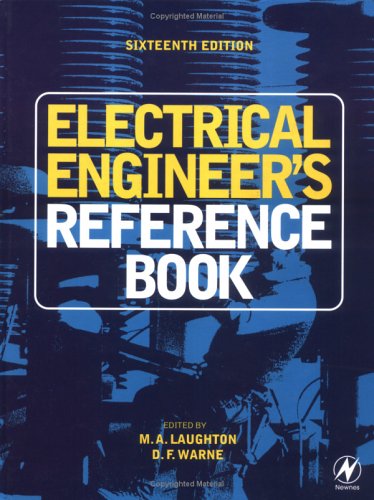
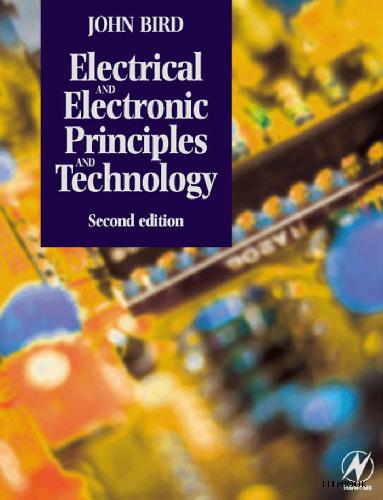
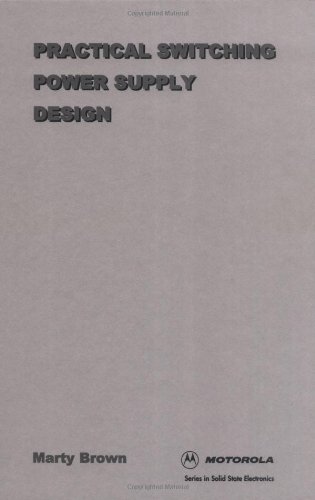
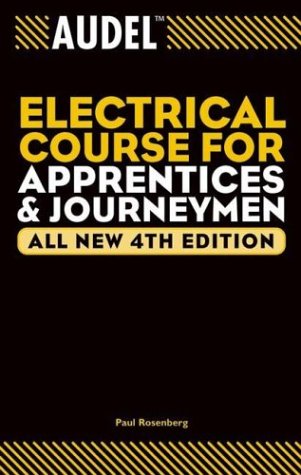
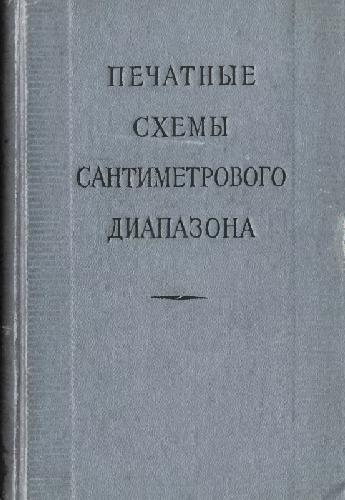

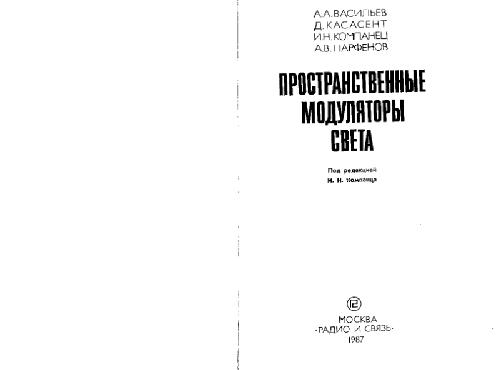
Reviews
There are no reviews yet.